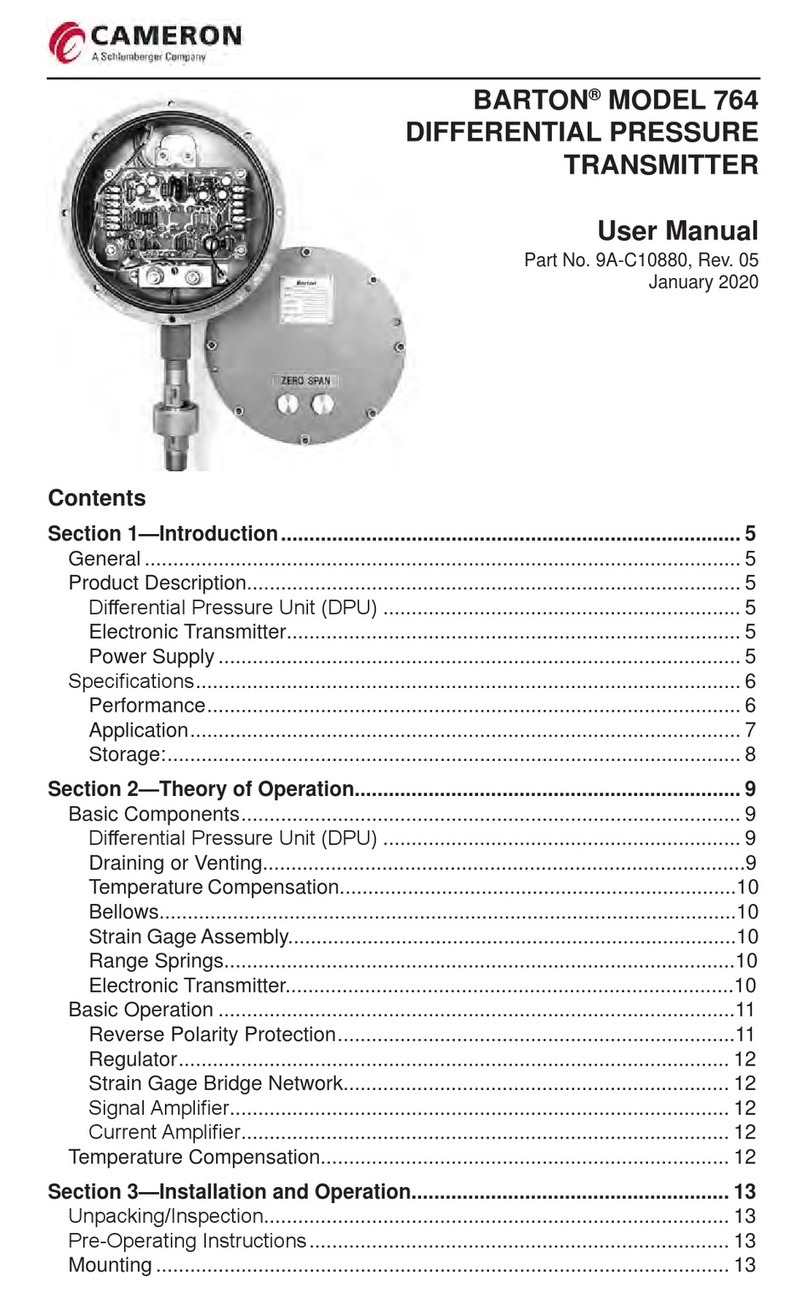
2
Safety
Before installing this product, become familiar with the installation instruc-
tions presented in Section 3 and all safety notes throughout.
! WARNING:Thissymbolidentiesinformationaboutpracticesorcircum-
stances that can lead to personal injury or death, property damage, or
economic loss.
CAUTION: Indicates actions or procedures which if not performed correctly
may lead to personal injury or incorrect function of the instrument
or connected equipment.
IMPORTANT: Indicates actions or procedures which may affect instrument operation or
may lead to an instrument response that is not planned.
Startup Procedure....................................................................................... 17
Shutdown Procedure .................................................................................. 18
Section 4—Calibration and Maintenance................................................... 19
General Field and Periodic Maintenance.................................................... 19
Electronic Transmitter.............................................................................. 19
Differential Pressure Unit (DPU) ............................................................. 19
Calibration .................................................................................................. 19
Electrical Connections for Calibration ..................................................... 20
Calibration Checkpoints .......................................................................... 21
Calibration Procedure ............................................................................ 21
DPU Inspection and Cleaning..................................................................... 22
Troubleshooting .......................................................................................... 23
Section 5—Assembly Drawing and Parts List........................................... 27
Section 6—Dimensional Drawings ............................................................. 31
Appendix A...................................................................................................A-1
Safety Precautions.....................................................................................A-1
Flow Application .....................................................................................A-1
Liquid Level Applications........................................................................A-1
Typical Piping/Startup Examples ...............................................................A-2
Gas Flow, DPU Above Run ....................................................................A-2
Gas Flow, DPU Below Run ....................................................................A-3
Gas Flow, Hydrates Present...................................................................A-4
Steam Flow, DPU Below Run.................................................................A-5
Liquid Flow, DPU Above Run .................................................................A-6
Liquid Flow, DPU Below Run .................................................................A-7
DPU Below Tank with Reference Leg: Hot or Cool Liquids....................A-8
DPU Level with Tank Bottom: Cool Liquids with Pressurized Tank ........A-9
DPU Below Tank Bottom: Cool Liquids with Pressurized Tank ............A-10
Product Warranty .....................................................................................A-11
Product Brand............................................................................................................
A-11





























